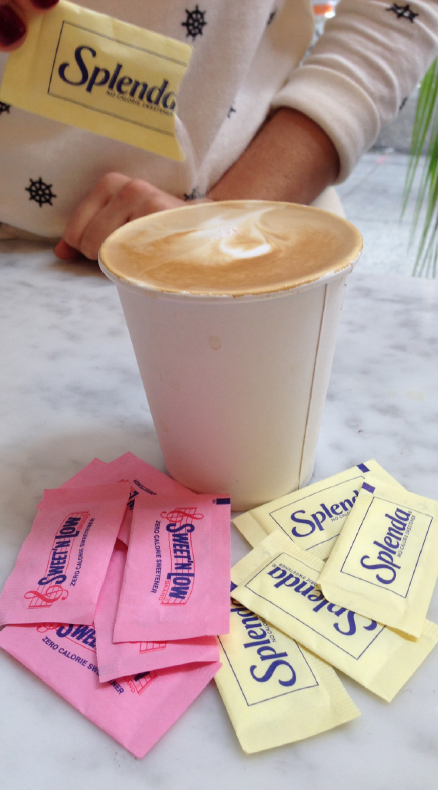By Candace H. Chemtob, MS, RD, LD, CSSD
Saccharin was discovered more than a century ago. In 1878, a chemist at Johns Hopkins University found that a byproduct of coal tar derivatives had a sweet taste, much to his surprise (www.time.com). Initially, saccharin (named after the Latin word for sugar, saccharum) was marketed as an “all-purpose curative” for headaches, nausea, and weight loss (American Dietetics Association). Later, during the world wars when sugar was scarce, saccharin made it’s way into the food market. The “love affair” with artificial sweeteners began, and by 1969 Americans were consuming seventeen million pounds per year.

While chemically diverse, artificial sweeteners share two main characteristics: they are several hundred to thousands of times sweeter than sugar (sucrose) itself and contain little or no calories. The FDA approved artificial sweeteners are: saccharin (Sweet N Low), aspartame (Equal), sucralose (Splenda), acesulfame-K (Sweet One), neotame, and advantame (Newtame). As with all food additives, the FDA requires extensive safety data. For example, in May 2014 the FDA approved Advantame after requiring the manufacturer to complete thirty-seven research studies in animals and humans (FDA Consumer Updates, 2014).
In addition to artificial sweeteners, there are two “natural” sugar substitutes approved by the FDA as “Generally Recognized As Safe” (GRAS) foods. GRAS substances, as the name suggests, are considered by experts to be safe and are not subjected to extensive testing and review by the FDA (FDA Consumer Updates, 2014). These sweeteners are steviol glycosides (Stevia) extracted from the leaves of the stevia plant and Swingle (or monk fruit) extracts (Nutresse)*. While derived from plants, neither sweetener is palatable in its natural state and both sweeteners are, in fact, highly processed. For those seeking the “less processed” version of Stevia, please beware. Whole leaf or crude Stevia extract is not approved by the FDA and has been linked to negative effects on the reproductive, cardiovascular, and renal systems (www.FDA/basics.com).
The safety of artificial sweeteners has been a hotly debated topic for decades. The artificial sweeteners cyclamate and saccharin were both linked to bladder cancer in animal (rat) studies. In the case of cyclamate, it remains a banned substance despite being “cleared” as a carcinogen. Saccharin was on the U.S. National Toxicology’s list of carcinogens from 1981 to 2000. In 2000, saccharin was “delisted” when the agency concluded that there was no direct evidence of a link to cancer in humans.
Are artificial sweeteners safe? The simple answer is yes. The National Cancer Institute of the National Institutes of Health stated, “There is no clear evidence that the artificial sweeteners available commercially in the United States are associated with cancer risk in humans.” Furthermore, the FDA has not found any significant health risk associated with the consumption of artificial sweeteners (except with aspartame consumption in the case of a rare genetic disorder called PKU). As with everything health related, moderation is key and the FDA set guidelines addressing safe levels of intake (Accepted Daily Intake, or ADI). The ADI for Splenda and Nutrasweet is up to 5 mg/kg of body weight/day. For an excellent review about safety, please check out www.cancer.gov/cancertopics/factsheet/Risk/artificial-sweetners).
One obvious benefit of artificial sweeteners would be to reduce sugar consumption and caloric intake. Unfortunately, however, this has not been the case. Instead, American consumption of sugar (including all caloric sweeteners like corn syrup) has skyrocketed by 39% since the 1950’s (www.USDA.gov). With the rates of obesity reaching more than 30% of adult Americans, it appears that Americans have an insatiable sweet tooth for both artificial sweeteners and the real thing.
*Note: The popular sweetener, Agave nectar, is not a sugar substitute. It contains fructose, a type of sugar, and has more calories than sugar (sucrose) itself.





